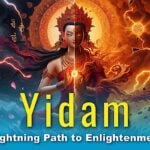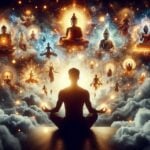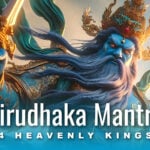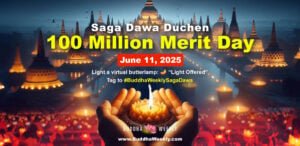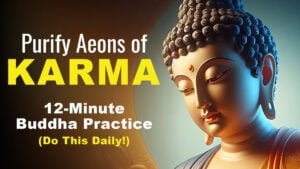July 6: His Holiness Birthday! Celebrating the Great 14th Dalai Lama’s Decades of Compassionate Activity, “Kindness that shines like a beacon” — Wishes for Long Life; his life and work
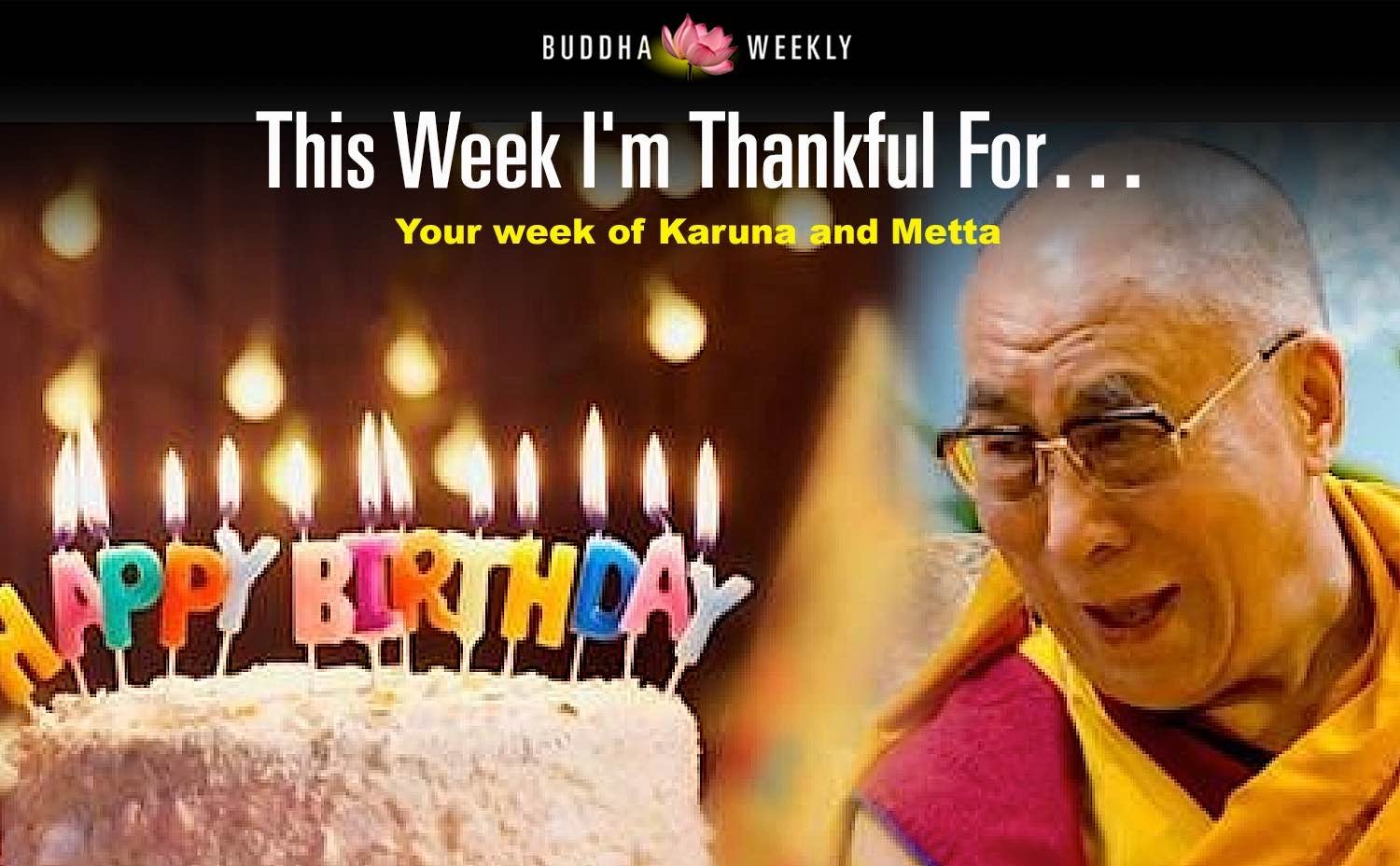
With kindness that shines like a beacon to the world, His Holiness the Dalai Lama celebrates his birthday on July 6th.

Born July 6, 1935 (Wood Pig year, 5th month, 5th day), His Holiness has been recognized with the Nobel Peace Price, Congressional Gold Medal and countless other international honors. Just a quick glance at this short list of awards (below) gives a sense of his vast humanity and love of people.
“Kindness is my religion,” he famously said — and his life continues to exemplify kindness, love (metta), and compassion (karuna)
His Holiness is known by many names: Gyalwa Rinpoche, Lhamo Thondup or Dhondup (his birth name), 14th Dalai Lama, Jamphel Ngawang Lobsang Yeshe Tenzin Gyatso, Bstan-’dzin-rgya-mtsho, or Tenzin Gyatso, His Holiness, or simply the Dalai Lama.
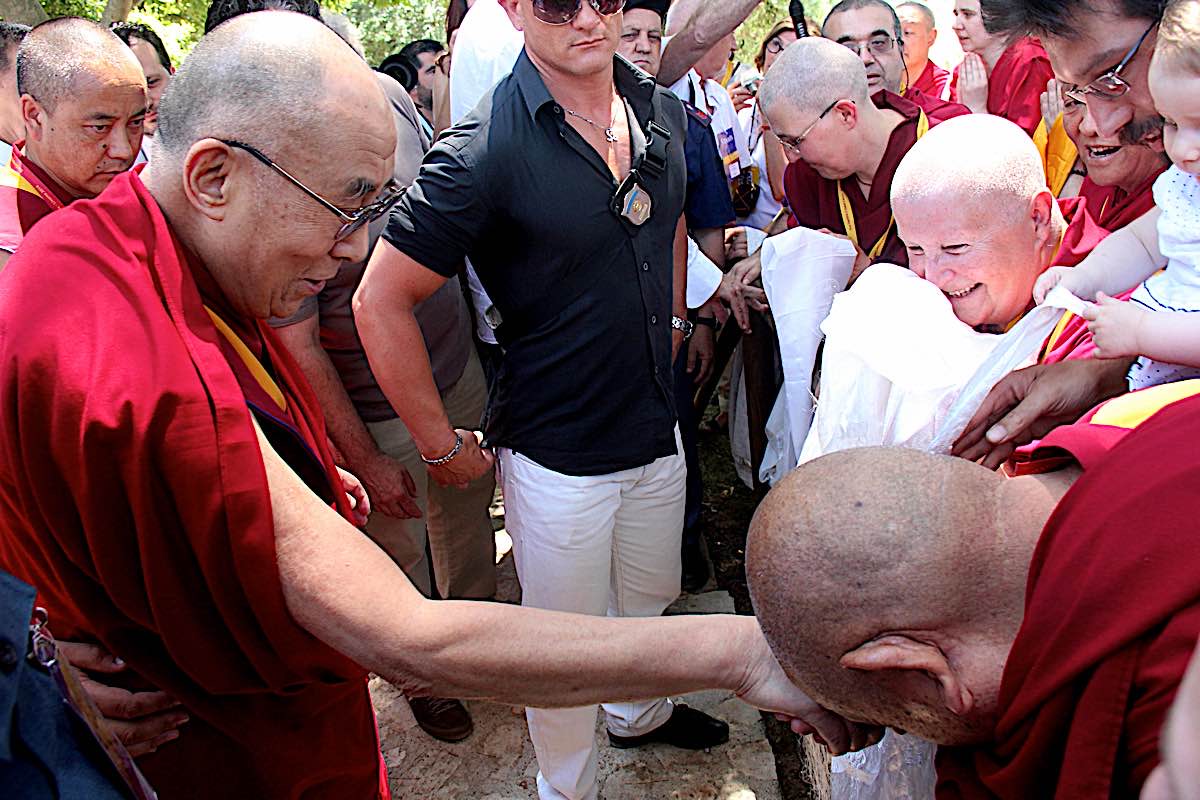
In this special feature, we celebrate the life of His Holiness, the shining light of compassion. We end with a prayer for his long life and some helpful resources for celebrating his birthday and wishing him long life.
His life as a Buddhist Monk
From the Dalai Lama’s official website, his life is summarized this way:
“His Holiness the 14th Dalai Lama, Tenzin Gyatso, describes himself as a simple Buddhist monk. He is the spiritual leader of Tibet. He was born on 6 July 1935, to a farming family, in a small hamlet located in Taktser, Amdo, northeastern Tibet. At the age of two, the child, then named Lhamo Dhondup, was recognized as the reincarnation of the previous 13th Dalai Lama, Thubten Gyatso.
The Dalai Lamas are believed to be manifestations of Avalokiteshvara or Chenrezig, the Bodhisattva of Compassion and the patron saint of Tibet. Bodhisattvas are realized beings inspired by a wish to attain Buddhahood for the benefit of all sentient beings, who have vowed to be reborn in the world to help humanity.” [1]
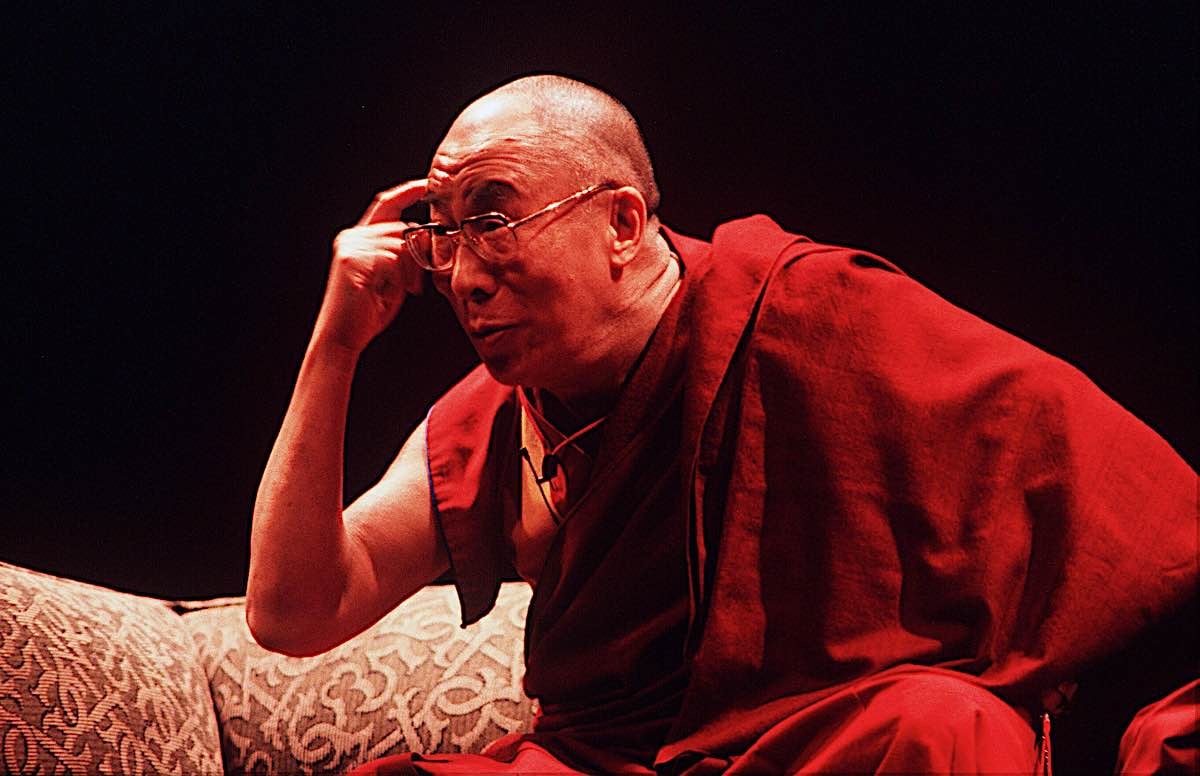
Who is the Dalai Lama? “A simple Buddhis monk”
In answer to the question, “How do your view yourself?” His Holiness the Dalai Lama answered:
“I always consider myself as a simple Buddhist monk. I feel that is the real me. I feel that the Dalai Lama as a temporal ruler is a man-made institution. As long as the people accept the Dalai Lama, they will accept me. But being a monk is something which belongs to me. No one can change that. Deep down inside, I always consider myself a monk, even in my dreams. So naturally I feel myself as more of a religious person.”

The Dalai Lama’s Three Commitments in Life
In His Holiness’s own words, he has three commitments in life:
- “human values such as compassion, forgiveness, and tolerence”
- “religious harmony between different traditions”
- “to act as a free spokesperson of the Tibetans.”
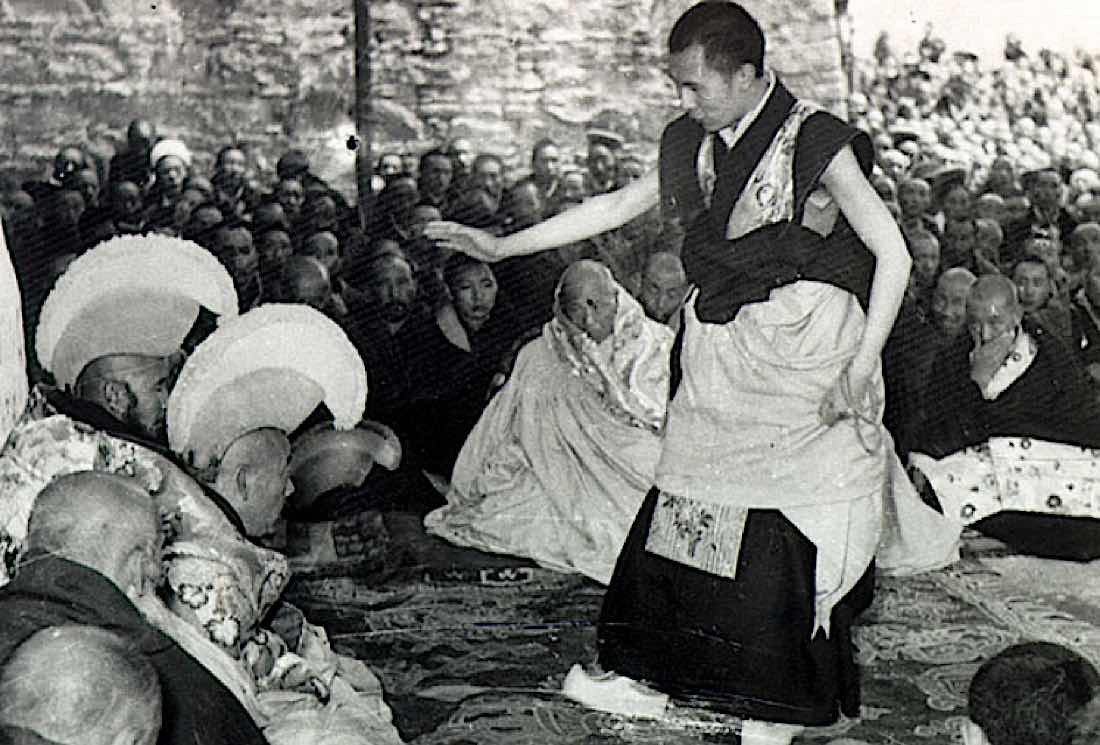
Past features on His Holiness, the Dalai Lama
- Full feature section of features on His Holiness on Buddha Weekly>>
- Laughter and Patch Adams — What they have in common>>
- Targeted Calm-Abiding Meditation: His Holiness the Dalai Lama and Lama Tsongkhapa>>
- Metta Meditation and the Dalai Lama>>
A life of service to others
In addition to his religious and political commitments, the Dalai Lama has also been a teacher throughout his life. He has authored over 100 books on topics such as Buddhism, meditation, quantum physics, and neuroscience. He is also a regular contributor to academic journals.
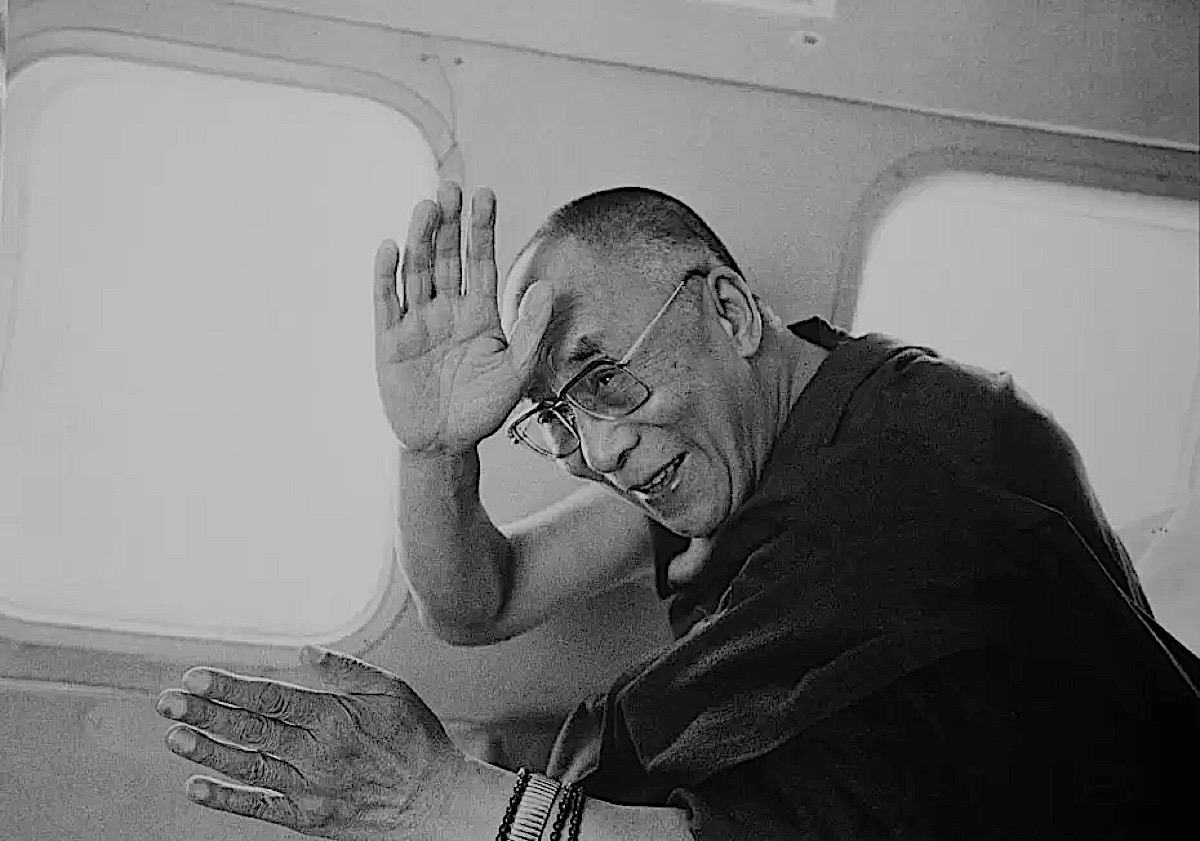
The Dalai Lama’s work for peace
Throughout his life, the Dalai Lama has been an outspoken advocate for peace. In 1989, he was awarded the Nobel Peace Prize “for his consistent resistance to the use of violence in his people’s struggle to regain Tibetan autonomy from China.”
In recent years, the Dalai Lama has continued to advocate for peace through his travels and teachings. In 2015, he spoke at the World Parliament of Religions where he said:
“When we meet someone of a different religion, or someone who doesn’t subscribe to any religious belief at all, we should remember that as far as ultimate goals are concerned, we’re on the same page. We’re seeking the same thing. The means may differ, but the ends are the same.”
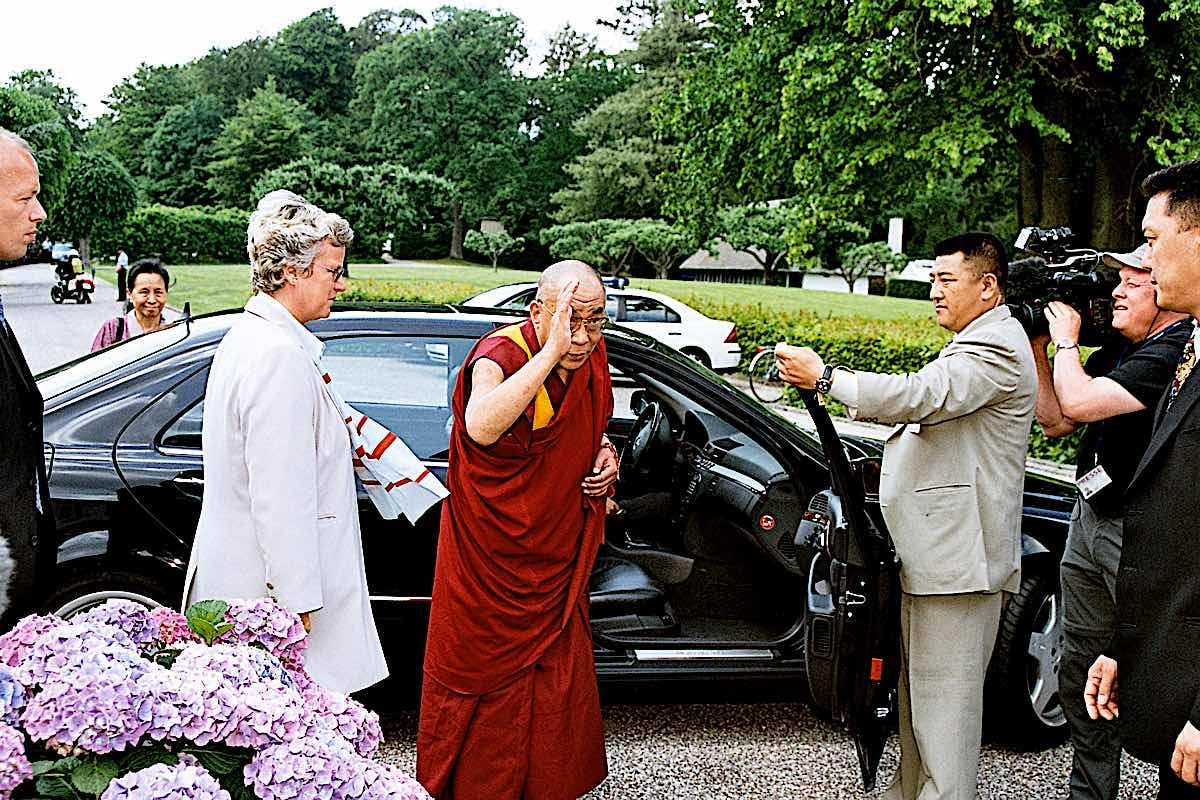
The Dalai Lama’s message for the world
On his 87th birthday, the Dalai Lama’s message for the world is simple:
“My main hope for humanity lies in education – that and more altruism and less focus on ‘me and mine.'”
In pursuit of this goal of education, at 87 years of age, he not only continues to meet countless people, dignitaries, and world leaders, he still undertakes many teaching events, empowerments and gatherings, each month — even during the Covid Pandemic. [For details, visit the events page of His Holiness the Dala Lama’s official web page>>]
The Dalai Lama’s greatest lesson in life
Again, in His Holiness’ own words:
“Regarding religious experience, some understanding of shunyata (emptiness: lack of independent self-nature) some feeling, some experience and mostly bodhichitta, altruism. It has helped a lot. In some ways, you could say that it has made me into a new person, a new man. I am still progressing. Trying. It gives you inner strength, courage, and it is easier to accept situations. That’s one of the greatest experiences.”[1]
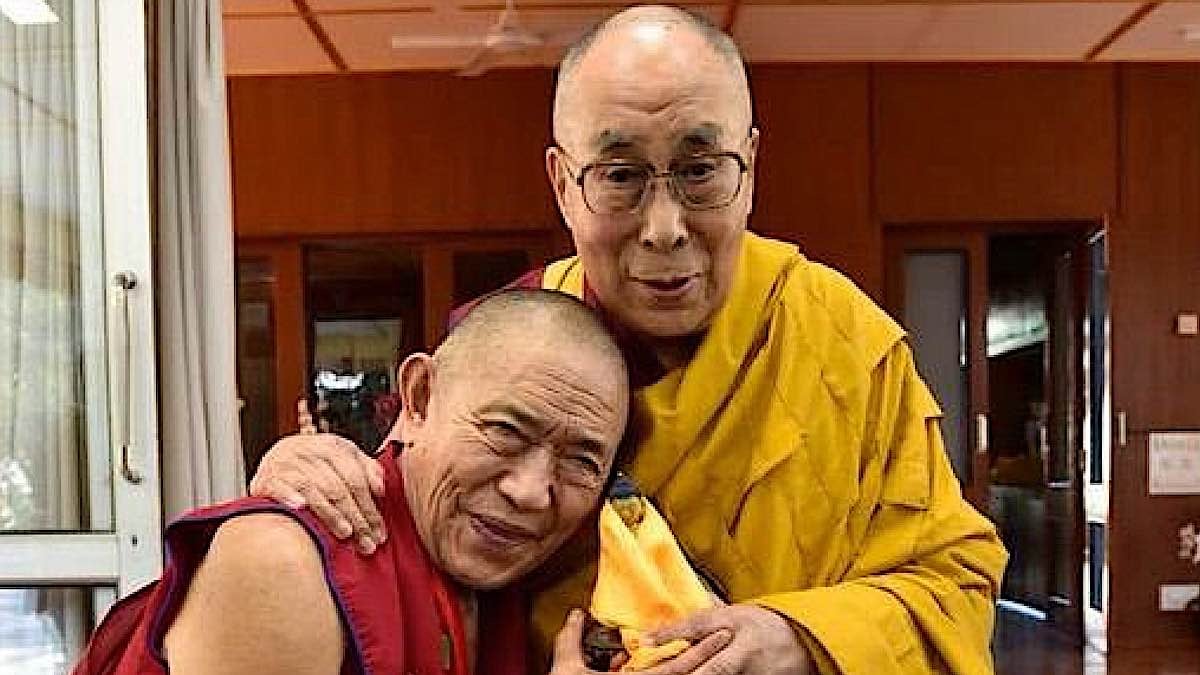
The Dalai Lama as an incarnation of Avalokiteshvara
Although His Holiness is most humble in his personal answer to the question of his status as an emanation of the Bodhisattva of Compassion, his actions speak loudest in this repect. In Tibetan Buddhist belief there is a saying, “All men are Avalokiteshvara and all women are Tara” — which is a lofty concept embracing the truth of our universal Buddha Nature. With the Dalai Lama, his status as an emanation of the Buddha of Compassion is a more “literal” one. This means he is considered an emanation in aspect and reality, not in terms of “Buddha Nature” potential.
When asked “how do you feel about this?” he replied, modestly,
“It is difficult for me to say definitely. Unless I am engaged in a meditative effort, such as following my life back, breath by breath, I couldn’t say exactly. We believe that there are four types of rebirth. One is the common type wherein, a being is helpless to determine his or her rebirth, but only reincarnates in dependence on the nature of past actions. The opposite is that of an entirely enlightened Buddha, who simply manifests a physical form to help others. In this case, it is clear that the person is Buddha. A third is one who, due to past spiritual attainment, can choose, or at least influence, the place and situation of rebirth. The fourth is called a blessed manifestation. In this, the person is blessed beyond his normal capacity to perform helpful functions, such as teaching religion. For this last type of birth, the person’s wishes in previous lives to help others must have been very strong. They obtain such empowerment. Though some seem more likely than others, I cannot definitely say which I am.” [1]
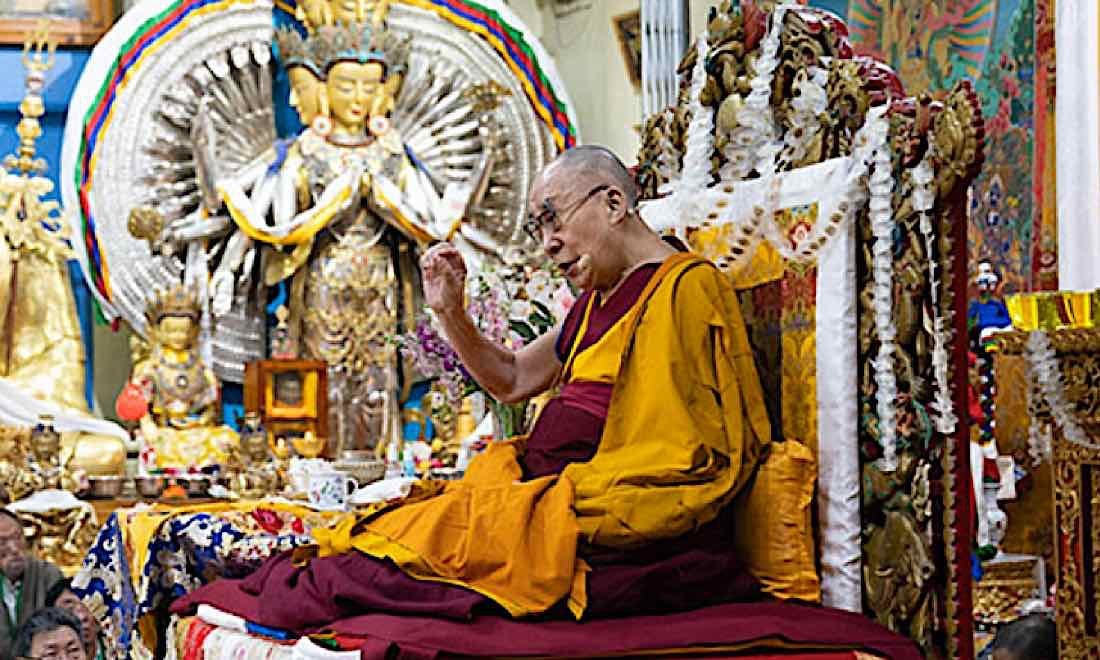
When asked to clarify if this role as Chenrezig is helpful or not, he answered, unequivocally, “It is very helpful. Through this role I can be of great benefit to people. For this reason I like it: I’m at home with it. It’s clear that it is very helpful to people, and that I have the karmic relationship to be in this role.”
The Dalai Lama on the world stage
Even at 87 years, His Holiness, seems never to tire or slow down. In addition to his daily audiences with people who visit, some of the world leaders and dignitaries he has met or visited include
Date / Name of the Person / Title / Place of Meeting / Country of Dignitary
January 17, 2020 / Nitish Kumar / Chief Minister of Bihar / Patna / India
January 8, 2020 / Nitish Kumar / Chief Minister of Bihar / Bodhgaya / India
August 28, 2019 / L.K. Advani / Former Deputy Prime Minister of India / New Delhi / India
April 14, 2019 / J.P. Nadda / Minister of Health of India / New Delhi / India
April 5, 2019 / Kailash Satyarthi / Nobel Peace Laureate / New Delhi / India
December 31, 2018 / Nitish Kumar / Chief Minister of Bihar / Bodhgaya / India
December 6, 2018 / Ram Nath Kovinde / President of India / New Delhi / India
November 10, 2018 / Manmohan Singh / Former Prime Minister of India / New Delhi / India
September 22&23, 2018 / Mario Fehr / President of Zurich Canton / Winterthur / Switzerland

H.D. Kumaraswamy / Chief Minister of Karnataka / Bangalore / India
June 14, 2018 / Vytautas Landsbergis / Former President of Lithuania / Vilnius / Lithuania
January 16, 2018 / Nitish Kumar / Chief Minister of Bihar / Bodhgaya / India
December 1, 2017 / Barack Obama / Former President of USA / New Delhi / USA
November 20, 2017 / Naveen Patnaik / Chief Minister of Odisha / Bhubaneswar / India
November 18, 2017 / L.K. Advani / Former Deputy Prime Minister of India / New Delhi / India
October 17, 2017 / Najma Heptulla / Governor of Manipur / Imphal / India
October 17, 2017 / N. Biren Singh / Chief Minister of Manipur / Imphal / India
September 19, 2017 / Enrico Rossi / President of Tuscany / Florence / Italy
July 30, 2017 / Piyush Goel / Minister for Power of India / Mumbai / India
July 30, 2017 / Harsh Vardhan / Minister for Science & Technology of India / Mumbai / India
July 30, 2017 / Mufti Mehbooba Mufti Sayeed / Chief Minister of Jammu & Kashmir / Leh / India
May 23, 2017 / Siddaramaiah / Chief Minister of Karnataka / Bengaluru / India
April 26, 2017 / Manmohan Singh / Former Prime Minister of India / New Delhi / India
April 25, 2017 / L.K. Advani / Former Deputy Prime Minister of India / New Delhi / India
April 9&11, 2017 / Pema Khandu / Chief Minister of Arunachal Pradesh / Guwahati / India
April 6, 2017 / Padmanabha Acharya / Governor of Arunachal Pradesh / Guwahati / India
April 2, 2017 / Banwarilal Purohit / Governor of Assam / Guwahati / India
April 1, 2017 / Pema Khandu / Chief Minister of Arunachal Pradesh / Guwahati / India
April 1, 2017 / Sarbananda Sonowal / Chief Minister of Assam / Guwahati / India
March 19, 2017 / Shivraj Singh Chauhan / Chief Minister of Mahya Pradesh / Bhopal / India
March 17, 2017 / Mahesh Sharma / Minister of Toursim of India / Rajgir / India
February 12, 2017 / E.S.L. Narasimhan / Governor of Telengana / Hyderabad / India
February 10, 2017 / N. Chandrababu Naidu / Chief Minister of Andhra Pradesh / Vijayawada / India
February 6, 2017 / Atal Bihari Vajpayee / Former Prime Minister of India / New Delhi / India
January 14, 2017 / Nitish Kumar / Chief Minister of Bihar / Bodhgaya / India
January 9, 2017 / Ram Nath Kovinde / Governor of Bihar / Bodhgaya / India
December 28, 2016 / Nitish Kumar / Chief Minister of Bihar / Patna / India
December 13, 2016 / Vajubhai Rudabhai Vala / Governor of Karnataka / Bengaluru / India
December 11, 2016 / Pranab Mukherjee / President of India / New Delhi / India
December 10&11, 2016 / Kailash Satyarthi / Nobel Peace Laureate / New Delhi / India
December 9, 2016 / Najeeb Jung / Lt. Governor of Delhi / New Delhi / India
November 18&22, 2016 / Tsakhiagiin Elbegdorj / President of Mongolia / Ulaanbaatar / Mongolia
October 18, 2016 / Daniel Herman / Minister of Culture for Slovakia / Bratislava / Slovakia
October 16, 2016 / Andrej Kiska / President of Slovakia / Bratislava / Slovakia
October 15, 2016 / Mario Fehr / President of Zurich Canton / Zurich / Switzerland
October 9, 2016 / Pema Khandu / Chief Minister of Arunachal Pradesh / New Delhi / India
September 15, 2016 / Martin Schulz / President of the European Parliament / Strasbourg / Germany
September 15, 2016 / Thorbjorn Jagland / Secretary General of the Council of Europe / Strasbourg / Norway
September 15, 2016 / Nils Muiznieks / Council of Europe’s Commissioner for Human Rights / Strasbourg / Latvia
September 8, 2016 / Jan Figel / European Commission Special Envoy for the Promotion of Freedom of Religion or Belief outside the European Union / Brussels / Belgium
June 22, 2016 / Thomas Monson / President of The Church of Jesus Christ of Latter-day Saints / Salt Lake City / USA
June 21, 2016 / Gary Herbert / Governor of Utah / Salt Lake City / USA
June 20, 2016 / Jerry Brown / Governor of California / Sacramento / USA
June 15, 2016 / Barack Obama / President of USA / Washington / USA
June 14, 2016 / Paul Ryan / Speaker of the US House / Washington / USA
June 14, 2016 / Nancy Pelosi / Minority Leader of the US House / Washington / USA
March 11, 2016 / Kate Gilmore / UN Deputy High Commissioner for Human Rights / Geneva / Australia
March 11, 2016 / Tawakkol Abdel-Salam Karman / Nobel Peace Laureate / Geneva / Yemen
March 4, 2016 / Paul Ryan / Speaker of the US House / Sea Island / USA
January 4, 2016 / Manmohan Singh / Former Prime Minister of India / New Delhi / India
January 4, 2016 / L.K. Advani / Former Deputy Prime Minister of India / New Delhi / India
January 4, 2016 / Najeeb Jung / Lt. Governor of Delhi / New Delhi / India
January 4, 2016 / Kailash Satyarthi / Nobel Peace Laureate / New Delhi / India
August 29, 2015 / Kailash Satyarthi / Nobel Peace Laureate / New Delhi / India
July 14, 2015 / Volker Bouffier / Prime Minister of Hessen / Wiesbaden / Germany
July 14, 2015 / Norbert Kartmann / President of the Hessen Parliament / Wiesbaden / Germany
July 12, 2015 / Claudia Roth / Vice President of the German Parliament / Wiesbaden / Germany
July 10, 2015 / Nancy Pelosi / Minority Leader of US House / New York / USA
July 6, 2015 / Jody Williams / Nobel Peace Laureate / Los Angeles / USA
July 6, 2015 / Shirin Ebadi / Nobel Peace Laureate / Los Angeles / Iran
July 1, 2015 / George W. Bush / Former President of USA / Dallas / USA
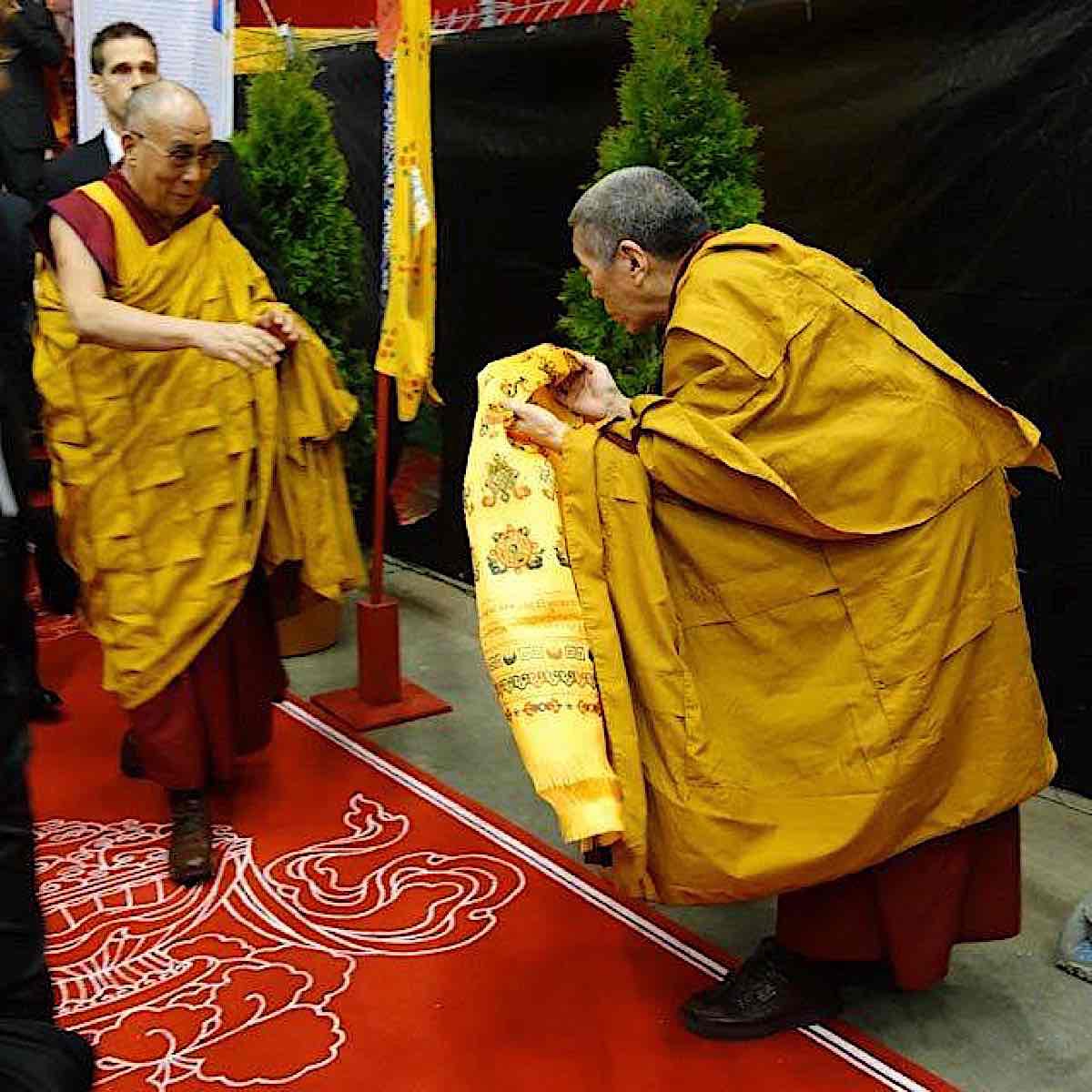
Honors received by His Holiness, the Dalai Lama
Most famously, he is known for the Nobel Peace Prize in 1989. From the Nobel Prize website:
“The 14th Dalai Lama (Tenzin Gyatso)
The Nobel Peace Prize 1989
Born: 6 July 1935, Taktser, Tibet
Residence at the time of the award: India
Prize share: 1/1
Prize motivation: “for advocating peaceful solutions based upon tolerance and mutual respect in order to preserve the historical and cultural heritage of his people”
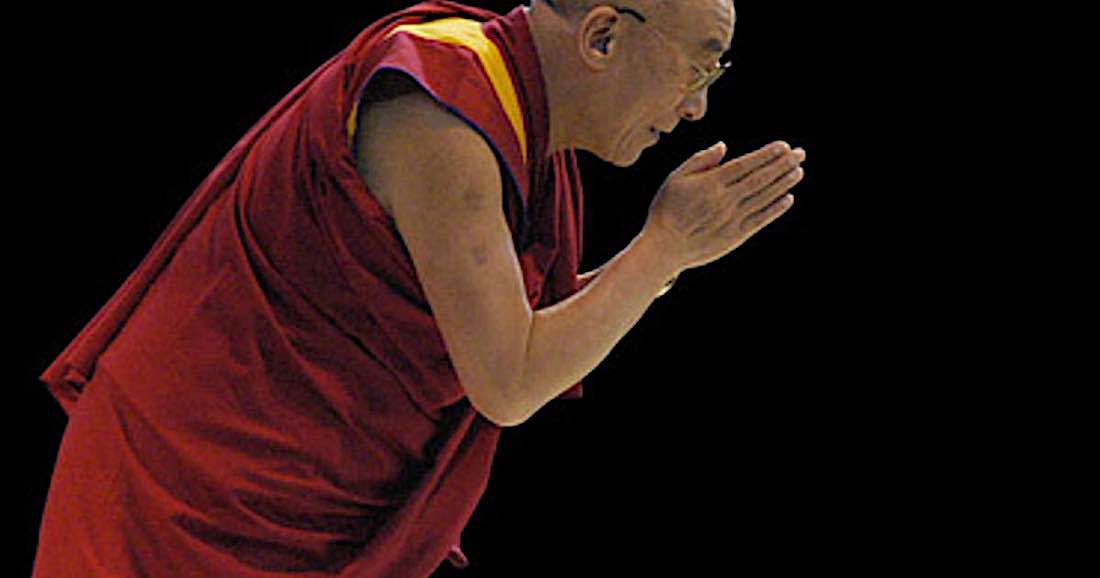
The Committee, in part, awarded His Holiness the award because
“When the Nobel Committee chose the Dalai Lama, it emphasized that he based his Buddhist peace philosophy on reverence for all living things and the idea of a universal responsibility that embraces both man and nature.”
Other awards given to His Holiness the Dalai Lama related to leadership, human rights, and peace were:
- 1959 Ramon Magsaysay Award for Community Leadership
- 1989 Noble Peace Prize
- 1994 Freedom Medal
- 1994 World Security Annual Peace Award
- 1999 Life Achievement Award
- 2006 Congressional Gold Medal
- 2003 Jaime Brunet Prize for Human Rights
- 2003 Human Rights Award
- 2008 Guru Nanak Interfaith Przie
- 2009 Lantos Human Rights Prize
- 2009 Jan Langos Human Rights Award
- 2008 Hanno R. Ellenbogen Citizenship Award
- 2010 International Freedom Conductor Award
- 2012 Templeton Prize
- 2022 Independent Publisher Book Awards for Nature

His Holiness Sakya Trichen and HH Sakya Trizen offer Long LIfe Prayers to His Holiness the Dalai Lama
On May 25,2022, His Holiness the Sakya Trichen and His Holiness the Sakya Trizen honored His Holiness the Dalai Lama and prayed for his long life:
“This morning a Long Life Offering was presented to His Holiness the Dalai Lama by members of the Sakya Tradition of Tibetan Buddhism at the Tsuglagkhang, the Main Tibetan Temple in Dharamsala. Hierarchs of both palaces, the Dolma Phodrang and Phuntsok Phodrang, headed by Sakya Dagtri Rinpoché, led the ceremonies.
Sakya Dagtri Rinpoché greeted His Holiness as he stepped out of his car just inside the gate to his residence. The two of them walked steadily through the gate and into the garden, where they were welcomed by a group of dancing drummers. Walking through the garden, His Holiness smiled and waved to members of the public, stopping occasionally to greet young children. He rode the recently installed lift up to the temple veranda and continued to engage with the public on his way round to the temple door.
Once His Holiness was seated on the throne, the Sakya Lamas offered scarves in welcome and the ceremony began. Tea and sweet rice were distributed while the congregation recited the mantra of White Tara.
After the text of the long life prayer had been recited, statues of the deities of longevity, White Tara, Amitayus and Ushnishavijaya, were presented to His Holiness. Sakya Dagtri Rinpoché then offered him a bowl full of long life pills. His Holiness took one for himself and gave another back to Sakya Dagtri Rinpoché, a process he repeated when he was given a spoonful of long life nectar.
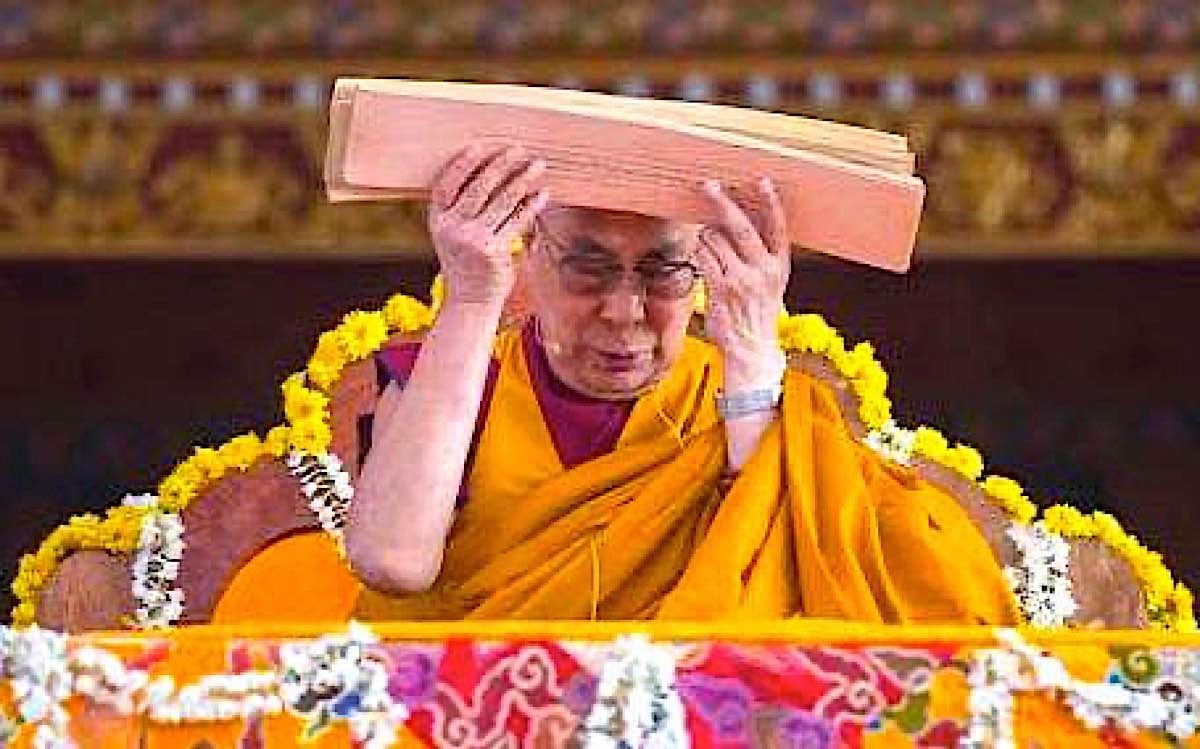
The incumbent Sakya Throne-holder, the Sakya Trizin, Gyana Vajra Rinpoché recited verses requesting His Holiness to live long while offering him a large, golden mandala. The previous Throne-holder, Ratna Vajra Rinpoché, continued to make prayers for His Holiness’s longevity as he presented him with a statue of White Tara, a volume of scripture, a reliquary object, a vase of the nectar of long life and a vajra and bell, which His Holiness rang. His Holiness briefly put on a Sakya hat.
Avikrita Vajra Rinpoché offered a mandala and representations of the enlightened body, speech and mind in thanks to His Holiness for agreeing to remain.” [4]
Short Long Life Prayer
There are many long-life prayers and practices dedicated to His Holiness the Dalai Lama’s long life. One of the best known is this short, traditional prayer:
Gangri raway korway shingkham su
In the land encircled by a ring of snow mountains
Pendang dewa malu jungway nay
Is the source of all happiness and benefit,
Chenrezig wang Tenzin Gyatso yi
All-knowing Chenrezig, Tenzin Gyatso.
Shaypay sitay bardu tengyur chik
May you stand firm until samsara ends.
May the life of the Glorious Lama remain steadfast and firm.
May he live ten thousand years, may he be always youthful.
Fulfiller of all the aspirations of beings in this world,
To you I pray with a single mind. Dalai Lama Tenzin Gyatso, may live long! “
Please extend His Holiness’ long life prayer to include the Dalai Lama’s return to Tibet:
“Dalai Lama Tenzin Gyatso, may you live long and may you soon return to Tibet.”
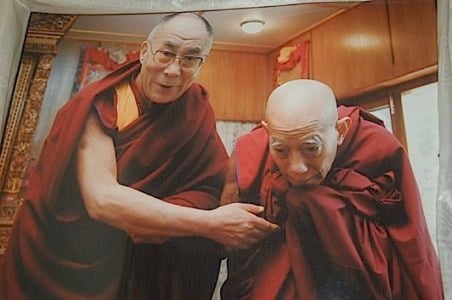
Lama Zopa’s advice for celebrating His Holiness Dalai Lama’s birthday
“Start from LA MA SANG GYÄ and the refuge and bodhichitta verses that I added. Do the verse for purifying and blessing the place; visualize that the place becomes like a pure land. Then do the invocation followed by blessing the offerings. Offer them together with LHA DANG MI YI CHHÖ PÄI DZÄ, the long [Offering Cloud] Mantra, [and the Power of Truth]. When the cymbals are played, they should go around three times. They should be played slowly, not fast, as if you have to run for pee-pee!
“Then do the Seven-Limb Prayer. In the monasteries, they would do the Seven-Limb Prayer from the King of Prayers, which is longer, but since people in the centers are not familiar with this, they can do the short one that we normally do. Stop a little bit at rejoicing, then finish [the Seven-Limb Prayer].
“Do the long mandala offering with the long chanting, then SA ZHI PÖ KYI, then GANG RII RA WÄ… You can also add the verses from [the mandala offering in] the long life puja. Then recite IDAM GURU RATNA…
“Then do [the long version of His Holiness’] long life prayer. It can be chanted like we usually do for long life prayers, or like Losang Gyäl Tänma (Prayer for the Flourishing of Je Tsongkhapa’s Teachings) is chanted during the Monlam Chenmo (Great Prayer Festival). I led this chant during the Bendigo retreat. Or you can do the common quick way of reciting it.
“After that, you must recite the Sixteen Arhats Prayer.1 Requesting the Sixteen Arhats to grant long life is very powerful. Recite it one, two, or three times. For Sixteen Arhats Prayer, there is no slow chanting; you can recite it like it is normally recited.

“The lama, geshe, or someone from the center should offer a mandala and body, speech, and mind, with a khata and a money offering in an envelope, [to His Holiness’ throne]. Then all the other people can offer His Holiness a khata, if they have one. You should touch your head to the throne and pray:
May you live showing us a healthy long life until our samsara ends.
May all your holy wishes succeed immediately.
Please guide me in all my lives
Until I achieve your state of full enlightenment, buddhahood.
“This request includes the prayer from Lama Chopa (LC 53) KHYÖ NI LA MA, KHYÖ NI YI DAM, KHYÖ NI KHA DRO CHHÖ KYONG TE…, and Calling the Guru from Afar by Kyabje Phabongkha Rinpoche. The meaning is that you request the guru to guide you until your death, in the intermediate state, and in all future rebirths, and in every day, every hour, every minute, and every second. This shows that this time we are the most fortunate ones. We can’t believe how fortunate we are. Just look at the rest of the people in the world, without counting the people in other universes. This prayer is also important in order to be able to follow His Holiness up to becoming oneness with His Holiness the Dalai Lama’s holy mind. This prayer is the most important one because if from your own side you don’t follow Him, His Holiness cannot guide you.
“This prayer is not only for His Holiness’ birthday, but can be done whenever you offer a khata to His Holiness’s picture or take blessings from him.
“All these prayers should be chanted.

“During the long life prayer and Sixteen Arhats Prayer, the rest of the people can go to take blessings [from His Holiness’ throne]. You don’t need to be quiet while people are taking blessings; [you can recite these prayers].
“Tea can be served during the long life prayer, as well as sweet rice. You can recite JAM PÄL PA WÖI NGAG LA WANG GYUR ZHING and so forth for the tea offering. The tea offering prayer is in the English of Lama Chopa combined with Jorcho. After that, for the rice offering prayer, recite in Tibetan: SANG GYÄ YÖN TÄN SÄM MI KHYAB / CHHÖ KYI YÖN TÄN SÄM MI KHYAB / PHAG PÄI GEN DÜN SÄM MI KHYAB / SÄM MI KHYAB LA DÄ JÄ PÄI / NAM PAR MIN PANG SÄM MI KHYAB / NAM DAG ZHING LA CHHÖ PAR BÜL.
“After that, if you desire, you can recite DAG SOG KHOR CHÄ TSHE RAB THAM CHÄ DU and so forth. It is very good to recite it. The last line of that verse, KÖN CHHOG SUM GYI JIN LAB JUG PAR SHOG, contains a request to generate all the realizations from seeing the guru as a buddha, correctly following the guru with thought and action, which is the root of the path to enlightenment; the common path, the three principal aspects of the path to enlightenment; and, in particular, the two tantric paths, the generation and completion stages; up to enlightenment.
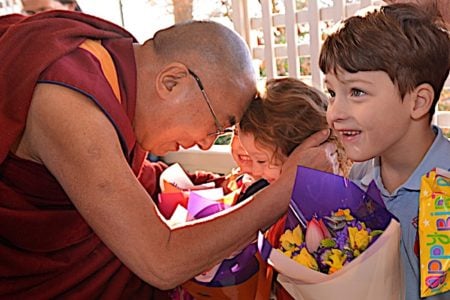
“[At the end,] you can do other [dedication] prayers. Do the short one that I normally lead, TSHE RAB KÜN TU GYÄL WA TSONG KHA PÄ and so forth. Then do MÄ JUNG NAM THAR TSANG MÄI THRIM DANG DÄN and so forth. Do PÄL DÄN LA MÄI NAM PAR THAR PA LA, KÄ CHIG TSAM YANG LOG TA MI KYE ZHING and so forth once again at the end to receive the blessings of the guru to develop devotion and respect toward the guru from now up to full enlightenment.
“Dedicate the merits for the world to have perfect peace and happiness. Recite the first verse from Eight Verses to be able to cherish every sentient being, from each realm, more than the sky filled with wish-granting jewels.
“Recite GE WA DI YI while doing the meditation of sealing [the dedication] with emptiness. Then, chant Final Lamrim Dedication or Losang Gyäl Tänma (Prayer for the Flourishing of Je Tsongkhapa’s Teachings) like I usually lead them, or, do them without, chanting, depending on how much time you have. This is talking in general but, if there is time, it is also good to do Tän Barma (Causing the Teachings of Buddha to Flourish). If you do it, then do Final Lamrim Dedication at the end. Thank you.
“If there is time, someone—the lama or geshe or even a student—can speak about who His Holiness is and about his kindness, so that people’s minds feel very connected to His Holiness.
“Doing [these prayers for His Holiness the Dalai Lama] will help your practice very much; you will get the realizations of the path.”

Past features on His Holiness, the Dalai Lama
- Full feature section of features on His Holiness on Buddha Weekly>>
- Laughter and Patch Adams — What they have in common>>
- Targeted Calm-Abiding Meditation: His Holiness the Dalai Lama and Lama Tsongkhapa>>
- Metta Meditation and the Dalai Lama>>
CITATIONS and NOTES
[1] Dalai Lama biography on Dalailama.com>>
[2] https://www.dalailama.com/biography
[3] https://www.dalailama.com/
[4] Tibet.net>>
[5] FPMT website>>
More articles by this author

July 6: His Holiness Birthday! Celebrating the Great 14th Dalai Lama’s Decades of Compassionate Activity, “Kindness that shines like a beacon” — Wishes for Long Life; his life and work

What are deities? Not other than “the qualities of the fully awakened… latent within us.” Who is Guru? “the pointer to these qualities”

Palden Lhamo, the Terrifying Female Protector aspect of Tara: “Sole Mother, Lady Victorious Over the Three Worlds”

The Dalai Lama and eight other teachers explain how to avoid taking Refuge in the wrong things and why Refuge can help us overcome obstacles
Search
Latest Features
Please support the "Spread the Dharma" mission as one of our heroic Dharma Supporting Members, or with a one-time donation.
Please Help Support the “Spread the Dharma” Mission!

Be a part of the noble mission as a supporting member or a patron, or a volunteer contributor of content.
The power of Dharma to help sentient beings, in part, lies in ensuring access to Buddha’s precious Dharma — the mission of Buddha Weekly. We can’t do it without you!
A non-profit association since 2007, Buddha Weekly published many feature articles, videos, and, podcasts. Please consider supporting the mission to preserve and “Spread the Dharma." Your support as either a patron or a supporting member helps defray the high costs of producing quality Dharma content. Thank you! Learn more here, or become one of our super karma heroes on Patreon.
Lee Kane
Author | Buddha Weekly
Lee Kane is the editor of Buddha Weekly, since 2007. His main focuses as a writer are mindfulness techniques, meditation, Dharma and Sutra commentaries, Buddhist practices, international perspectives and traditions, Vajrayana, Mahayana, Zen. He also covers various events.
Lee also contributes as a writer to various other online magazines and blogs.




